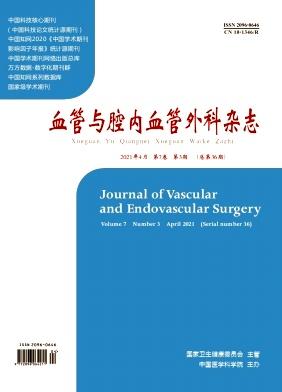Chimney technique for left subclavian artery restoration -Two cases presentations-
引用次数: 0
Abstract
Introduction: Left subclavian artery revascularization (LSAR) is performed in the setting of thoracic endovascular repair (TEVAR). In recent years, the chimney technique is an effective method of LSAR. Cases: Two case reports analyze our experience in the chimney technique for the LSAR. In the first case, a young male underwent in a TEVAR due to an aortic isthmus rupture. In the second case, a male underwent in elective endovascular repair of thoracic aortic aneurysm and in the second time he underwent in an endovascular abdominal aortic aneurysm repair. In 3 months postoperatively, the second man’s follow-up CTA showed that the stents were well formed and no obvious endoleak was noticed. Conclusion: The LSAR in patients who underwent in TEVAR decreases the risk of stroke and upper limb ischemia. Several minimally invasive procedures have been employed to manage this, one of them is the chimney graft technique.烟囱技术修复左锁骨下动脉2例报告
简介:左锁骨下动脉重建术(LSAR)是在胸椎血管内修复术(TEVAR)中进行的。近年来,烟囱技术是一种有效的LSAR方法。案例:两个案例报告分析了我们在LSAR烟囱技术方面的经验。在第一个病例中,一名年轻男性因主动脉峡部破裂而接受了TEVAR。在第二个病例中,一名男性接受了选择性的血管内胸主动脉瘤修复术,第二次他接受了血管内腹主动脉瘤修复术。术后3个月,第二例患者随访CTA显示支架成形良好,未见明显内漏。结论:LSAR可降低TEVAR患者发生脑卒中和上肢缺血的风险。有几种微创手术被用来治疗这种情况,其中之一是烟囱移植技术。
本文章由计算机程序翻译,如有差异,请以英文原文为准。
求助全文
约1分钟内获得全文
求助全文

 求助内容:
求助内容: 应助结果提醒方式:
应助结果提醒方式:


